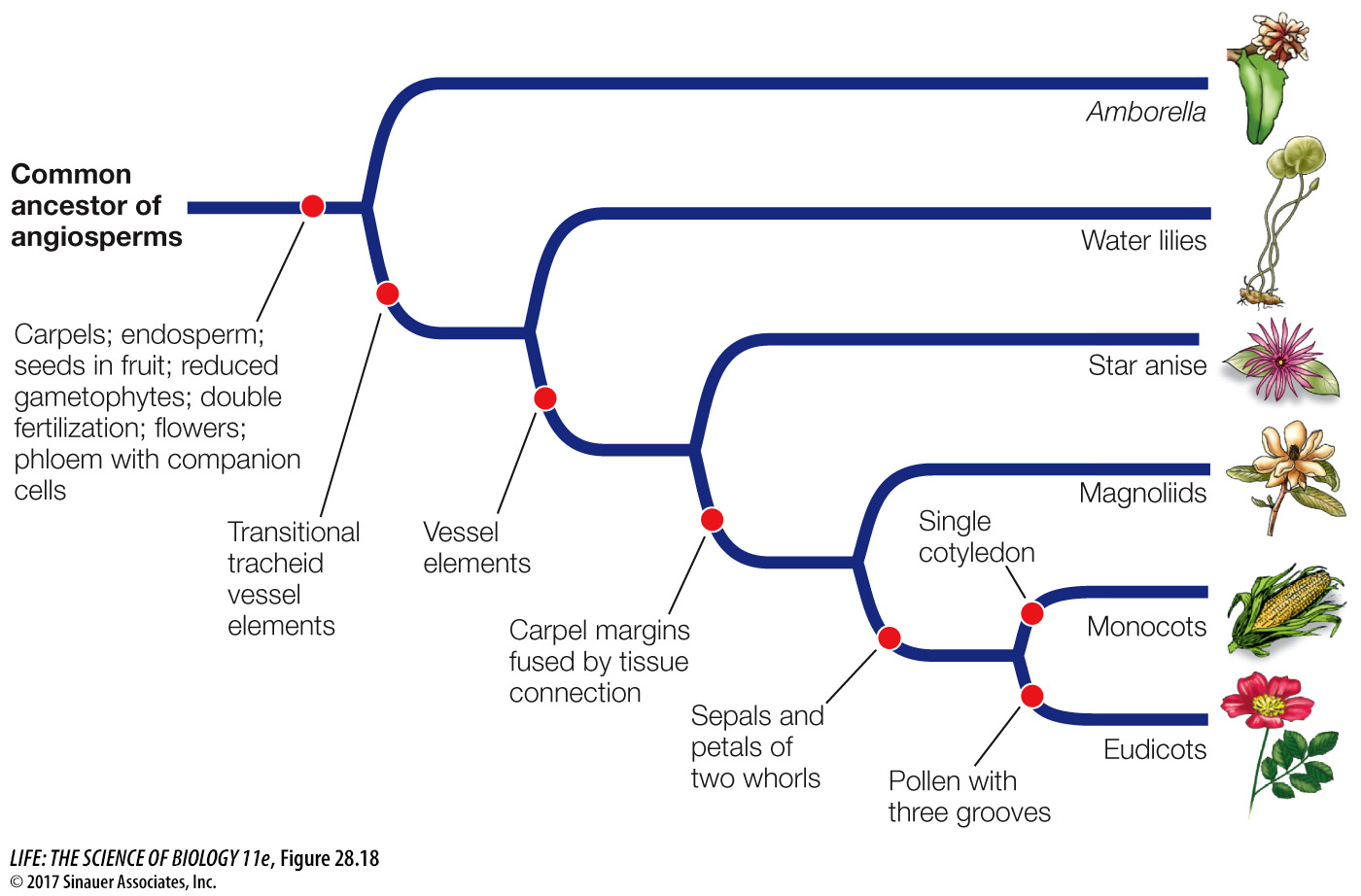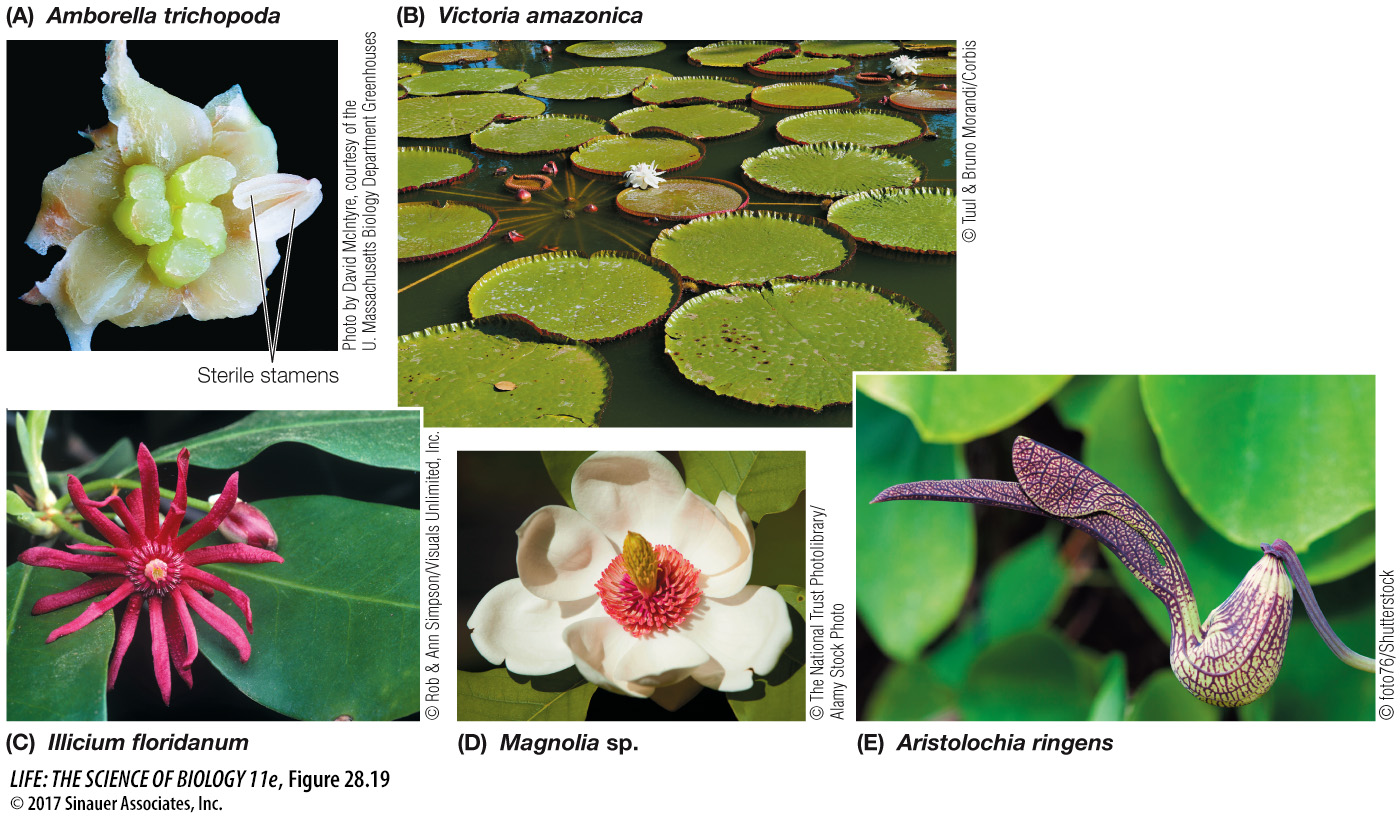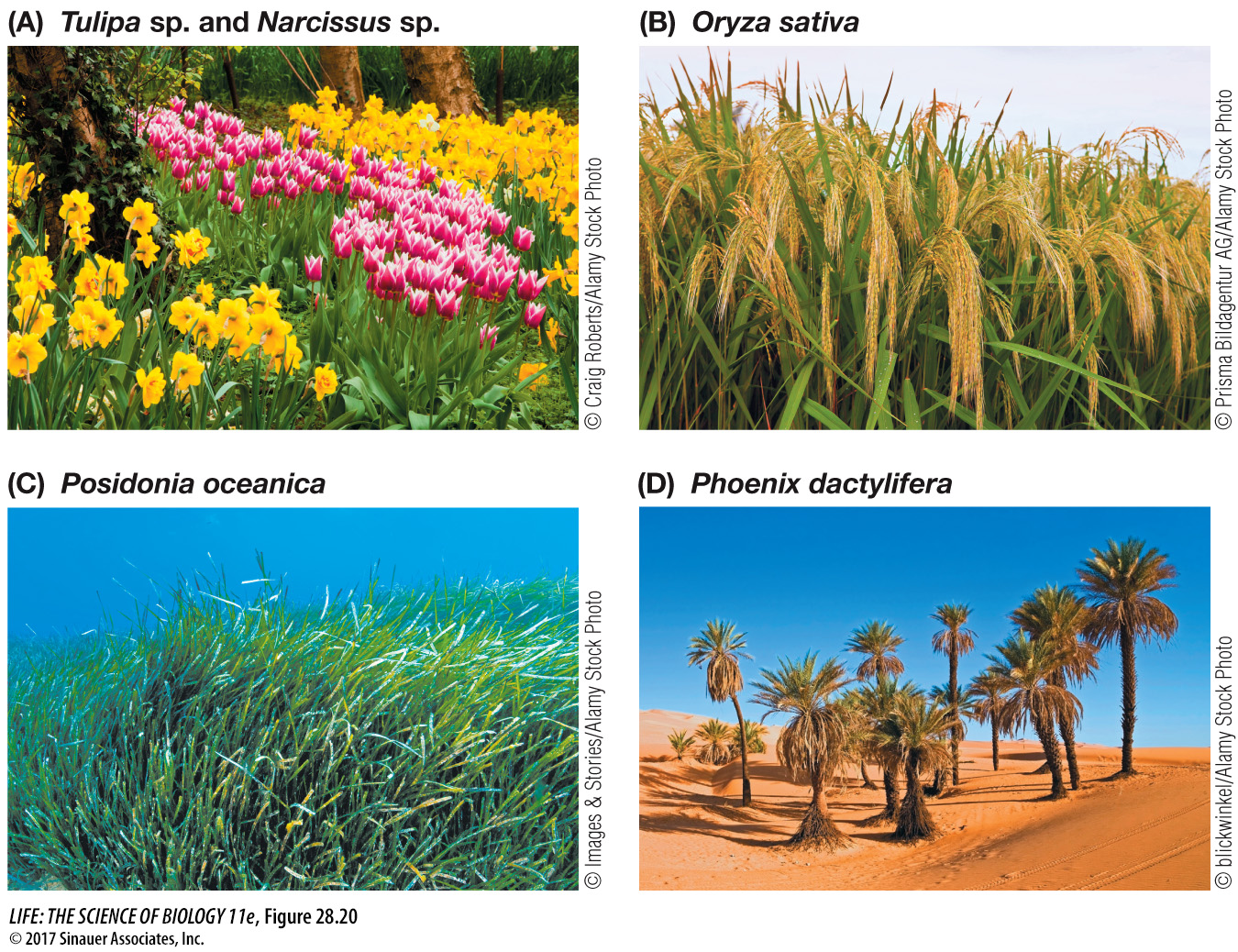Recent analyses have revealed the phylogenetic relationships of angiosperms
Figure 28.18 shows the relationships among the major angiosperm clades. Recent molecular and morphological analyses have supported the hypothesis that the sister group of remaining flowering plants is a single species of the genus Amborella (Figure 28.19A). This woody shrub with cream-colored flowers lives only on New Caledonia, an island in the South Pacific. Other early-branching angiosperm groups include the water lilies (Figure 28.19B), star anise and its relatives (Figure 28.19C), and the magnoliids (Figure 28.19D, E). The magnoliids include many familiar and useful plants, such as avocados, cinnamon, black pepper, and magnolias.
Page 607

Figure 28.18 Evolutionary Relationships among the Angiosperms Recent analyses of many angiosperm genes have clarified the relationships among the major groups.

Figure 28.19 Monocots and Eudicots Are Not the Only Surviving Angiosperms (A) Amborella, a shrub, is sister to the remaining extant angiosperms. Notice the sterile stamens on this female flower, which may serve to lure insects that are searching for pollen. (B) The water lily clade was the next to diverge after Amborella. (C) Star anise and its relatives belong to another early-diverging angiosperm clade. (D, E) The largest clade other than the monocots and eudicots is the magnoliid complex, which includes magnolias and the group known as “Dutchman’s pipe.”
The two largest clades—the monocots and the eudicots—include the great majority of angiosperm species. The monocots are so called because they have a single embryonic cotyledon, whereas the eudicots have two.
Representatives of the two largest angiosperm clades are everywhere. The monocots (Figure 28.20) include grasses, cattails, lilies, orchids, and palms. The eudicots (Figure 28.21) include the vast majority of familiar seed plants, including most herbs (i.e., nonwoody plants), vines, trees, and shrubs. Among the eudicots are such diverse plants as oaks, willows, beans, snapdragons, roses, and sunflowers.
Page 608

Figure 28.20 Monocots (A) Monocots include many popular garden flowers such as these tulips (pink and white) and daffodils (yellow). (B) Monocot grasses such as rice feed the world; wheat, sugarcane, and corn (maize) are also grasses. (C) Seagrasses such as this Neptune’s grass form “meadows” in the shallow, sunlit waters of the world’s oceans. (D) Palms are among the few monocot trees. Date palms like these are a major food source in some areas of the world.

Figure 28.21 Eudicots (A) Eudicots include many trees, such as this crabapple tree. (B) Scarlet Banksia is a species of an Australian genus of eudicots that attracts a wide diversity of pollinators by producing large quantities of nectar. (C) Cacti comprise a large group of eudicots, with about 1,500 species in the Americas. Many, such as this spinystar cactus, bear large flowers for a brief period of each year. (D) Rafflesia arnoldii, found in the rainforests of Indonesia, bears the largest flower in the world. The flower lives as a parasite on tropical vines and has lost its leaf, stem, and even root structures. It smells like decaying meat, which attracts its fly pollinators.



